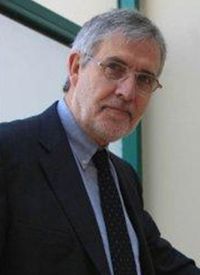Global HPV Vaccination Reshaping Standard of Care for Cervical Cancer Prevention
Xavier Bosch, MD, discusses a second-generation vaccination against HPV for the prevention of cervical cancer.
Xavier Bosch, MD

Xavier Bosch, MD
According to the Centers for Disease Control and Prevention, incidence rates of HPV-associated cancers continue to rise, with approximately 39,000 new HPV-associated cancers now diagnosed annually in the United States.
The HPV vaccine can potentially prevent more than 90% of cervical cancer, as well as a large proportion of other cancers caused by certain HPV types. The vaccine is, at this point, nearly standardized internationally with a greater number of countries introducing it in clinical practice for patients.
“[These] vaccines are excellent, safe, and are entering the public programs, which is changing the screening for cervical cancer,” said Xavier Bosch, MD. “Within a few years, this will be a standard vaccine.”
OncLive: Can you discuss the HPV vaccination for cervical cancer prevention in Europe?
In an interview with OncLive, Bosch, a senior consultant at the Unit of Infections and Cancer (UNIC), Cancer Epidemiology Research Programme, Institut Catala d' Oncologia—Catalan Institute of Oncology, discussed a second-generation vaccination against HPV for the prevention of cervical cancer.Bosch: These second-generation vaccines have the ability to protect against 7 HPV types that cause cervical cancer and a number of other cancers in males and females.
What challenges is the HPV vaccine facing in Europe?
The arrival of this vaccine is dramatically reshaping what we are considering the standard of care for prevention, with the previous standards of care being a conventional Pap smear or gynecologic visit to screen for cervical cancer. We understand that the cohorts of women who receive that vaccine are 25 years old in most countries, with a low prevalence of any significant disease in the cervix. Therefore, the conventional cytology would lose its power and technologies are now available so that screening will convert into HPV-detection technology. We have a dual situation in Europe. Many of the countries are vaccinating very well in the range of 85% to 95%. The structure of the public health system facilitates delivery of the vaccine in the school programs. In general, there are no safety concerns.
In the other extreme, we have a couple of incidences in which there has been a claim that the vaccine could have some undesirable side effects. The entire scientific community, the World Health Organization (WHO), and every advisory committee has examined every claim in detail. They continue to support the deployment of the vaccination. However, this creates an environment of suspicion about the vaccine around families, physicians, the press, and lawyers, which challenges the decision to give it to patients.
Can you discuss the development of the vaccine?
We have seen similar hesitancy with vaccinations for polio, measles, and any other viral induced infectious disease. We are witnessing outbreaks of disease that we thought were eliminated from our community because of the individuals who are poorly vaccinated. This vaccine has been in development for many years. In fact, it has already gone through stage III and stage IV licensing both in the United States, Europe, and the majority of the countries in the world. In the United States, it has completely replaced the previous generation of vaccines already. That has happened without any major problem or change in the issues that were raised at the introduction of these vaccines.
What do you hope community physicians take away from your insight on the vaccine?
Europe and Australia are now introducing the vaccine and the transition is happening smoothly. Within a few years, this will be a standard vaccine.Gynecologists participate in screening activities and have begun to understand that the conventional Pap smear is something of the past. Current technology is much more reliable than what we had previously.
One could conclude that the arrival of a vaccine against cancer is a breakthrough in the history of medicine in the last 2 or 3 decades. Intensive research has led to the point in which action is necessary. We are still confronted with the fact that cervical cancer is the number 1 cancer in women in the majority of developing countries where screening is non-existent. The real challenge for the public health community is how to deliver those vaccines to the countries that need them most.
This becomes a public health issue. Cervical cancer can be a disease that is strongly reduced but for that to happen, we need an international effort that is well coordinated and well supported. In the coming years, we expect that many of us will leave the academic environment and head into the public health and political environment.
Razzaghi H, Saraiya M, Thompson TD, et al. Five-year relative survival for human papillomavirus-associated cancer sites [published online November 6, 2017]. Cancer. doi: 10.1002/cncr.30947.



